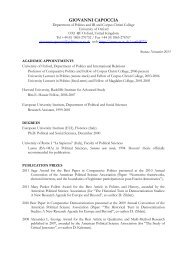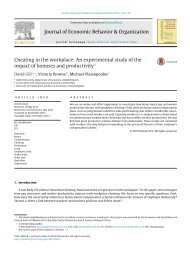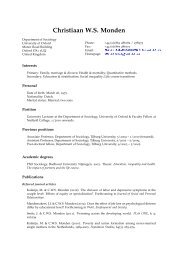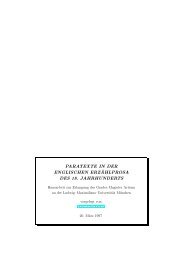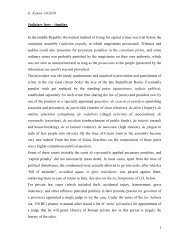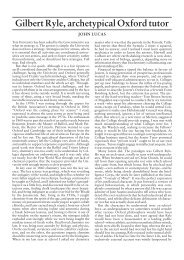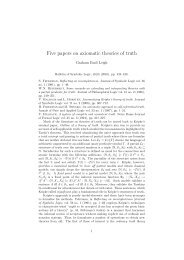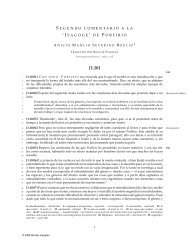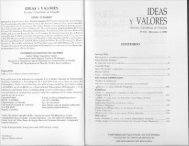Lexical Functional Grammar - Personal Pages Index
Lexical Functional Grammar - Personal Pages Index
Lexical Functional Grammar - Personal Pages Index
Create successful ePaper yourself
Turn your PDF publications into a flip-book with our unique Google optimized e-Paper software.
¬, and the scope of negation is indicated by curly brackets. This lexical entry<br />
allows two possibilities. The first is for the base form of the verb, in which the<br />
value of the VFORM feature is BASE. For the second possibility, the value of the<br />
feature TENSE is PRES for present tense, and a third-person singular subject<br />
is disallowed by negating the possibility for the PERS feature to have value 3<br />
when the NUM feature has value SG.<br />
4 The c-structure/f-structure relation<br />
There are clear crosslinguistic regularities relating constituent structure positions<br />
to grammatical functions. In particular, phrases and their heads are<br />
required to correspond to the same f-structure, and specifier and complement<br />
positions are associated with particular grammatical functions. Such generalizations<br />
constrain the relation between c-structure positions and the f-structure<br />
positions they are associated with.<br />
4.1 Structural correspondences<br />
To express these generalizations formally, relating nodes in the c-structure tree<br />
and the f-structures they correspond to, we can define a function called φ (phi)<br />
relating nodes of the c-structure tree to parts of the f-structure for a sentence.<br />
In (29), the φ function from the NP node to the f-structure it corresponds to is<br />
represented by an arrow and labeled φ:<br />
(29) David sneezed.<br />
IP<br />
NP<br />
N ′<br />
N<br />
I ′<br />
VP<br />
V ′<br />
φ<br />
⎡<br />
⎤<br />
PRED ‘SNEEZE〈SUBJ〉’<br />
⎢<br />
⎣TENSE PAST<br />
⎥<br />
SUBJ [ PRED ‘DAVID’ ] ⎦<br />
David<br />
V<br />
sneezed<br />
Each node of the c-structure tree corresponds to some part of the f-structure.<br />
As shown in (30), more than one c-structure node can correspond to the same<br />
f-structure (the φ function is many-to-one):<br />
(30)<br />
V ′<br />
φ<br />
[ ]<br />
PRED ‘SNEEZE〈SUBJ〉’<br />
V<br />
sneezed<br />
TENSE PAST<br />
Further, there can be f-structures that have no corresponding c-structure node<br />
(the φ function is into). Example (31) shows the c-structure and f-structure<br />
for a sentence of Japanese, a so-called pro-drop language in which the verb<br />
13



